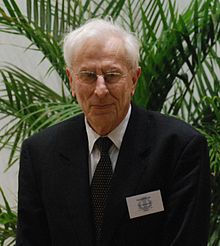Harald Rose | |
|---|---|
 | |
| Born | 14 February 1935 Bremen, Germany |
| Known for | Aberration-corrected transmission electron microscopy |
| Awards | Wolf Prize in Physics (2011) BBVA Foundation Frontiers of Knowledge Award (2013) Kavli Prize in Nanoscience (2020) |
| Scientific career | |
| Fields | Electron microscopy |
Harald Rose (born 14 February 1935) is a German physicist. He is a laureate of the 2011 Wolf Prize in Physics and the 2020 Kavli Prize in Nanoscience for the development of aberration-corrected transmission electron microscopy.